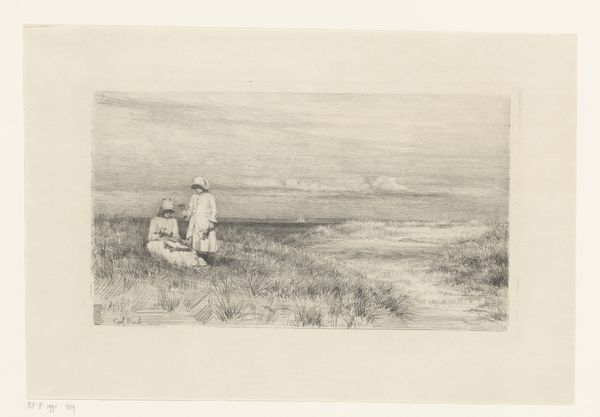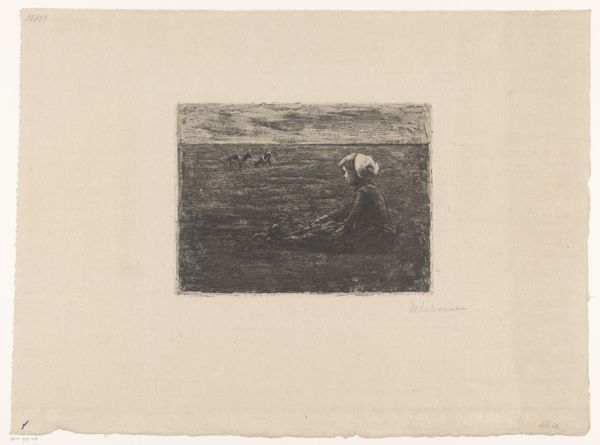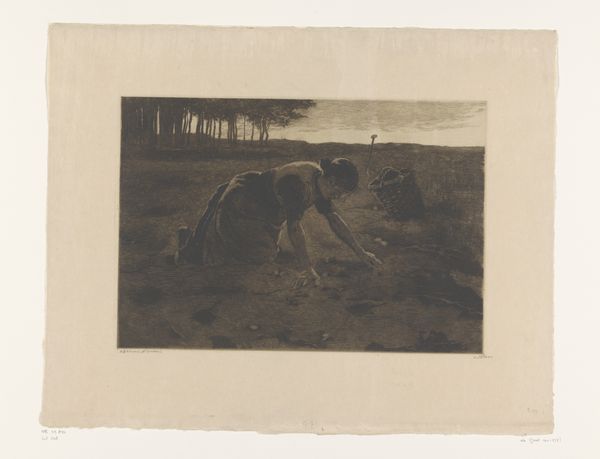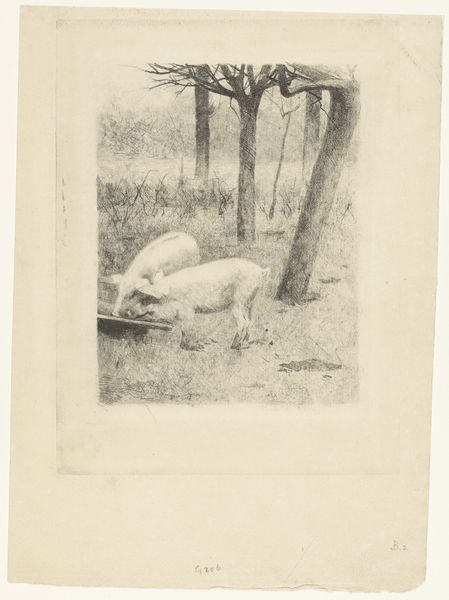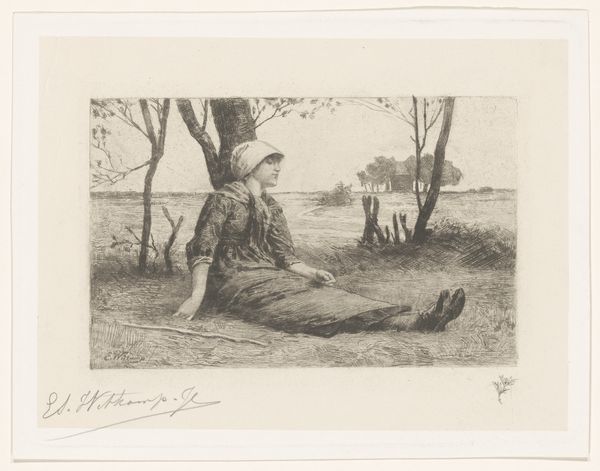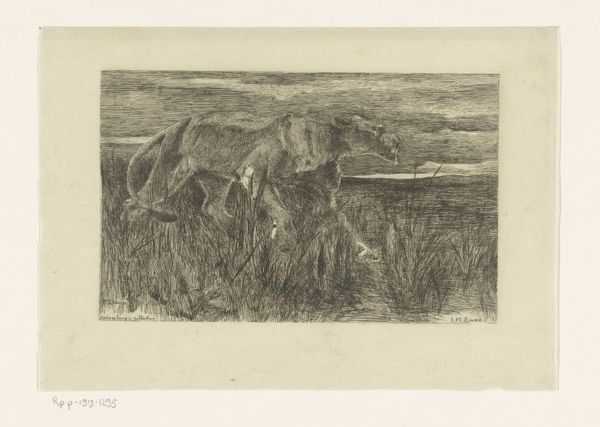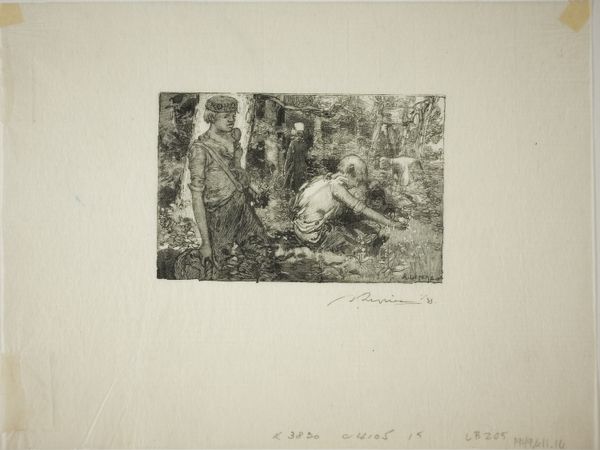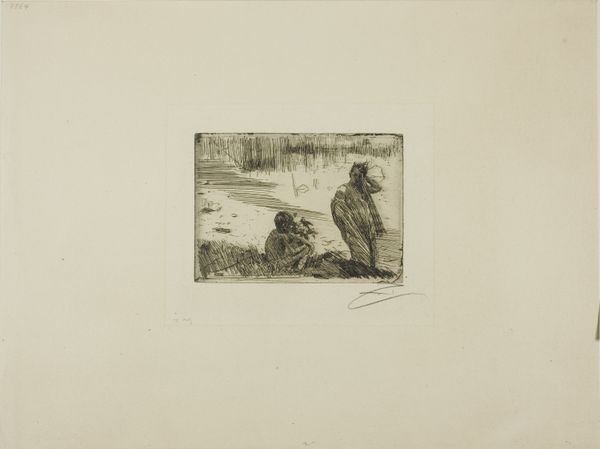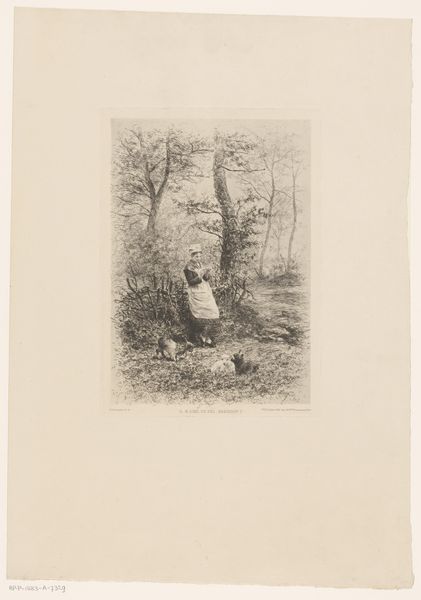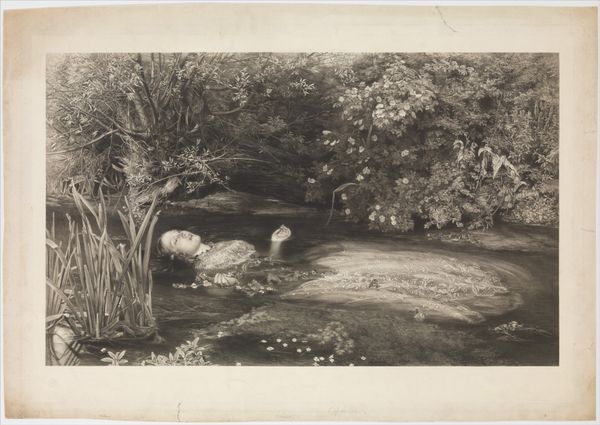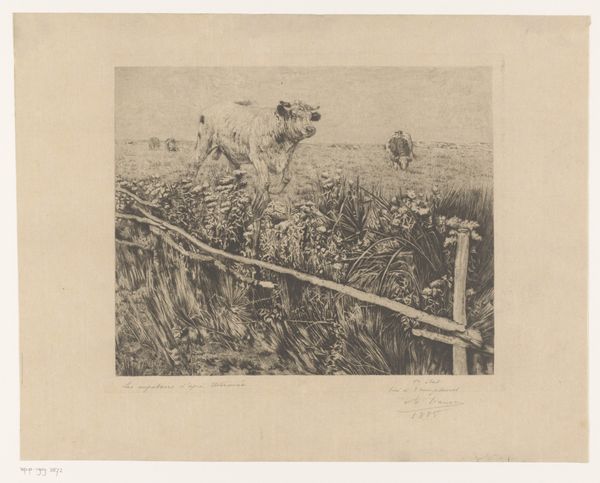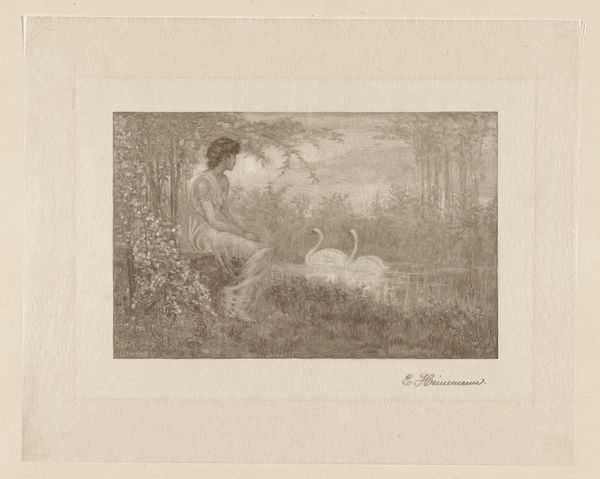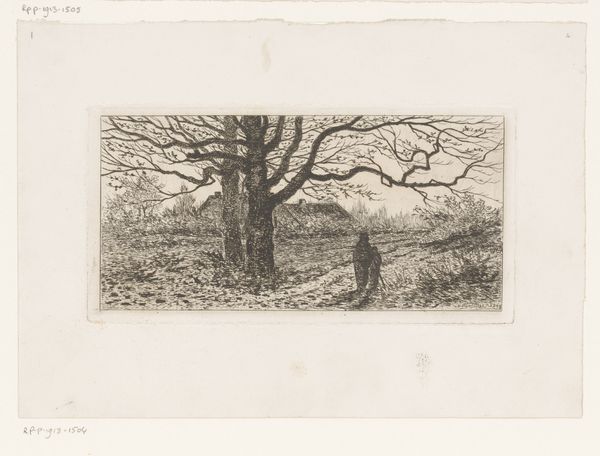
drawing, pencil
#
pencil drawn
#
drawing
#
dutch-golden-age
#
pencil sketch
#
landscape
#
pencil
#
pencil work
#
genre-painting
#
realism
Dimensions: height 244 mm, width 329 mm
Copyright: Rijks Museum: Open Domain
Editor: We're looking at "Drinkende Koe," or "Drinking Cow," a pencil drawing by Hendrikus Alexander van Ingen, dating somewhere between 1856 and 1920. There's a really tranquil feeling to this pastoral scene. What do you see in this piece, particularly considering its historical context? Curator: This drawing, seemingly simple, opens up interesting dialogues. Van Ingen captures a seemingly mundane moment – a cow drinking – within a tradition of landscape art. But consider the socio-economic realities of the time. Land ownership, the role of agriculture, and even the depiction of animals were often tied to power dynamics and social class. How might this seemingly innocent image reflect those power structures, or perhaps critique them? Editor: That's a great point. I hadn't really considered the power dynamics inherent in the depiction of livestock. Is there a feminist reading of this piece, perhaps related to themes of nature, labor, and the feminine? Curator: Absolutely. Think about the cow itself – a symbol of fertility, nourishment, and a very gendered understanding of nature as something to be exploited. Consider how artistic portrayals of the countryside were mostly created by men during the period. Can this be perceived as reflecting women's role and their labor in rural settings? And does the 'realism' aesthetic mask the complexities or idealize it, perhaps contributing to certain biases? Editor: It’s interesting to think about how those broader cultural and philosophical lenses change the way we view the image. I assumed the artist simply captured a moment in the countryside. Curator: Exactly! By unpacking the layers of history and theory, we move beyond a superficial reading. It’s about understanding the multiple narratives embedded within a seemingly simple drawing. Editor: I will never look at rural landscape drawings the same way!
Comments
No comments
Be the first to comment and join the conversation on the ultimate creative platform.
